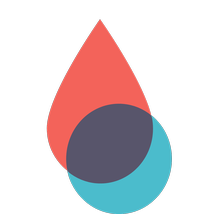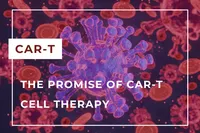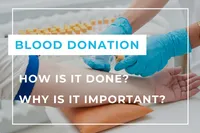Home › Biological sample › Cancer › Lymphoma
Lymphoma biological samples:
Research application and procurement
The development of drugs and diagnostic tests for the treatment and detection of lymphoma requires conducting studies on biological samples obtained from patients with lymphoma.
A brief overview of the various types of lymphoma and how the services offered by Labtoo contribute to accelerating research and development projects in the pharmaceutical industry.


Are you looking for biological samples from lymphoma patients?
What is lymphoma?
Lymphomas are cancers originating in B and T lymphocytes of the lymphatic system, a complex network of vessels, nodes, and organs that play a central role in the body's immune defense. This system is widely distributed throughout the body, including lymph nodes, bone marrow, spleen, tonsils, and other lymphatic tissues. Lymphomas are distinguished from leukemias by their primary origin in lymphatic tissues, such as lymph nodes and spleen, whereas leukemias typically affect bone marrow and blood.
The two main categories of lymphomas, Hodgkin lymphoma and non-Hodgkin lymphoma, can develop in these various lymphatic tissues.
Hodgkin lymphoma
These lymphomas are characterized by the specific presence of Reed-Sternberg cells, identified as large atypical cells visible under the microscope. They frequently derive from B cells.
It is noteworthy that Reed-Sternberg cells are integrated into the tumor structure, without constituting its entirety.
Non-Hodgkin lymphoma
Unlike Hodgkin lymphomas, these lymphomas do not exhibit Reed-Sternberg cells.
They encompass a diversity of subtypes, each exhibiting its own characteristics. Among the most common are diffuse large B-cell lymphoma and follicular lymphoma.
| Type of Lymphoma | Cell of Origin | Frequency |
|---|---|---|
| Classical Hodgkin Lymphoma | Reed-Sternberg cells | ≈ 95% of CHL |
| Diffuse Large B-cell Lymphoma | B cell | ≈ 30 - 40% of NHL |
| Follicular Lymphoma | B cell | ≈ 20% of NHL |
| Mantle Cell Lymphoma | B cell | ≈ 5 - 10% of NHL |
| Burkitt Lymphoma | B cell | Rare, more common in children |
| Anaplastic Large Cell Lymphoma | B cell or T cell | Rare |

Unlike many other cancers, lymphomas are not "solid tumors" as they develop in the lymphatic system, a network of lymph nodes, lymphatic vessels, and lymphoid organs dispersed throughout the body. Therefore, the tumor can migrate to other parts of the body at any time, and the concept of metastasis is not applicable to this type of cancer.
Explore Labtoo's Service for Your Biological Sample Research
Labtoo assists you in sourcing biological samples from lymphoma patients. Our team manages the entire project of transferring biological materials from inception to sample delivery.
- Feasibility assessment of sample availability or clinical collection from referenced clinical centers
- Validation of regulatory aspects
- Establishment of a contractual framework
- Dispatch of desired samples under appropriate conditions
- Transfer of associated clinical data
- Additional analytical and experimental services
Types of available samples
Frozen tissues (OCT and FF)
The clinical site can freeze cell pellets from clinical biopsies and keep them at -80°C or in liquid nitrogen for ulterior use.
FFPE Tissues
Pathologists can embed cell pellets or biopsies from lymphoma patients in paraffin. FFPE blocks from lymphoma patients can be used later for research.
- Plasma or Serum from lymphoma patients
- PBMC (Peripheral Blood Mononuclear Cells)
- Whole Blood
- Leukapheresis
- Urine
- Feces
- Other
Typical associated clinical data
-
- Age
- Gender
- Ethnicity
- TNM Classification
- Undergone Treatment
- Medical Imaging
- HIV/HBV/HCV status
- Mutations
- Other Data (upon request)

Labtoo identifies clinical sites that can prepare and transfer sample collections tailored to your specific project needs.
Contact our team to discuss your project.
Send your request to our team:
The stages and grades of lymphoma
Lymphomas are frequently characterized by their categorical classification and stage, with Hodgkin and non-Hodgkin lymphomas classified in the same manner. Categories A, B, E, and X provide insights into the systemic manifestations of the disease, such as fever, weight loss, night sweats, or their absence.
On the other hand, the staging system, ranging from 1 to 4, offers a quantitative assessment of the extent of lymphoma spread throughout the lymphatic system. This detailed classification allows for a precise evaluation of disease severity, influencing treatment decisions.
The lymphoma categories are defined as follows:
Category A
Absence of fever, night sweats, and significant weight loss.
Category B
Presence of unexplained fever, night sweats, and involuntary weight loss.
Category E
The lymphoma is localized in nearby tissue outside the lymph nodes, indicating extranodal involvement.
Category S
The lymphoma affects a substantial extent, characterized by bulky disease.
The lymphoma stages are defined as follows:
Stage I
The lymphoma is either in a group of lymph nodes or in an area outside the lymph nodes.
Stage II
The lymphoma is either in at least 2 groups of lymph nodes or in one group of lymph nodes but has spread to nearby tissue.
Stage III
The lymphoma is either in lymph nodes above and below the diaphragm or located in the spleen and lymph nodes above the diaphragm.
Stage IV
Generalized lymphoma, it has spread to various regions of the body, such as bones, liver, spinal cord, or lungs.

Rare forms of lymphoma
It happens that rarer forms of kidney cancer develop, among them:
-
Anaplastic Large Cell Lymphoma
Characterized by abnormally large cells and often displaying nuclear anaplasias. It can manifest in the lymphatic system and other tissues.
-
Burkitt Lymphoma
A highly aggressive non-Hodgkin lymphoma characterized by rapid growth of B cells. It can affect lymph nodes, bone marrow, and other lymphoid organs. This pathology is more common in children, especially in Africa, where it is associated with Epstein-Barr virus infection.
-
Mantle Cell Lymphoma
A type of indolent non-Hodgkin lymphoma, but it can also present more aggressive forms. It is characterized by involvement of lymph nodes, spleen, and bone marrow.
Lymphoma treatments and advances
The treatments associated with lymphomas depend on the specific type of lymphoma, its stage, the overall health of the patient, and other individual factors. Here are some commonly used therapeutic approaches for treating lymphomas:
-
Chemotherapy: Often employed as a first-line treatment for many lymphomas. The combination of drugs and the treatment regimen vary based on the type of lymphoma.
-
Radiation Therapy: Utilizes ionizing radiation to target and destroy cancer cells. It is frequently used for localized lymphomas, especially in cases of Hodgkin's disease. It is much less common in non-Hodgkin lymphomas, as the disease has often spread by the time of detection.
-
Immunotherapy: Stimulates the patient's immune system to attack cancer cells. Immunotherapeutic drugs, such as immune checkpoint inhibitors (nivolumab, pembrolizumab), may be used in the treatment of certain lymphomas.
-
Targeted Therapy: Targeted drugs specifically act on molecules involved in the growth of cancer cells. They are used for certain subtypes of B-cell non-Hodgkin lymphomas, such as mantle cell lymphoma or Burkitt lymphoma. Examples include the use of rituximab.
-
Cellular Therapy: Cellular therapy, such as stem cell transplantation, may be considered in certain cases. It involves reintroducing healthy stem cells after high-dose chemotherapy or radiation.
It is crucial that the treatment plan be developed by a specialized hematology-oncology medical team. Each patient is unique, and the treatment must be tailored based on their specific situation.




